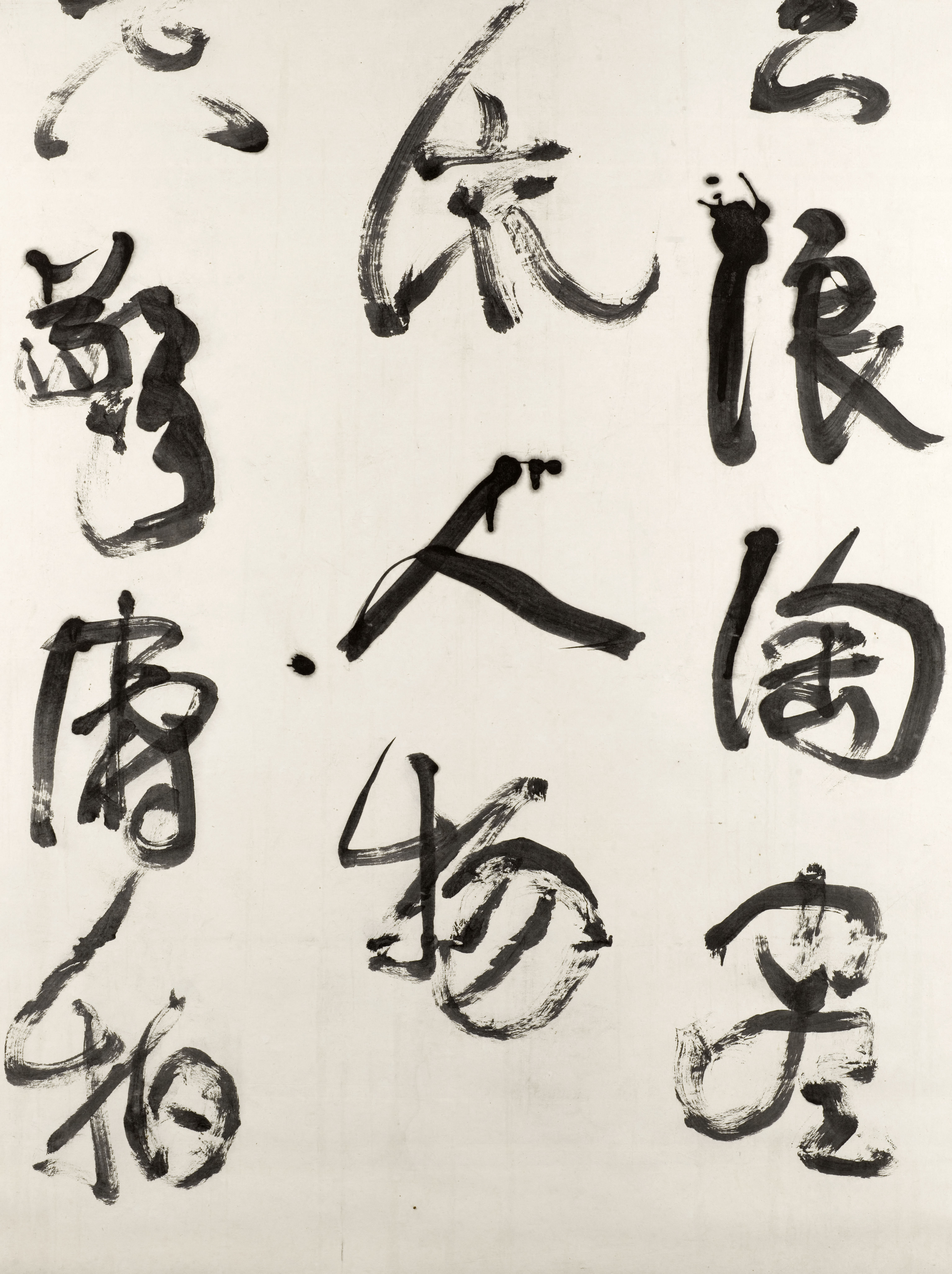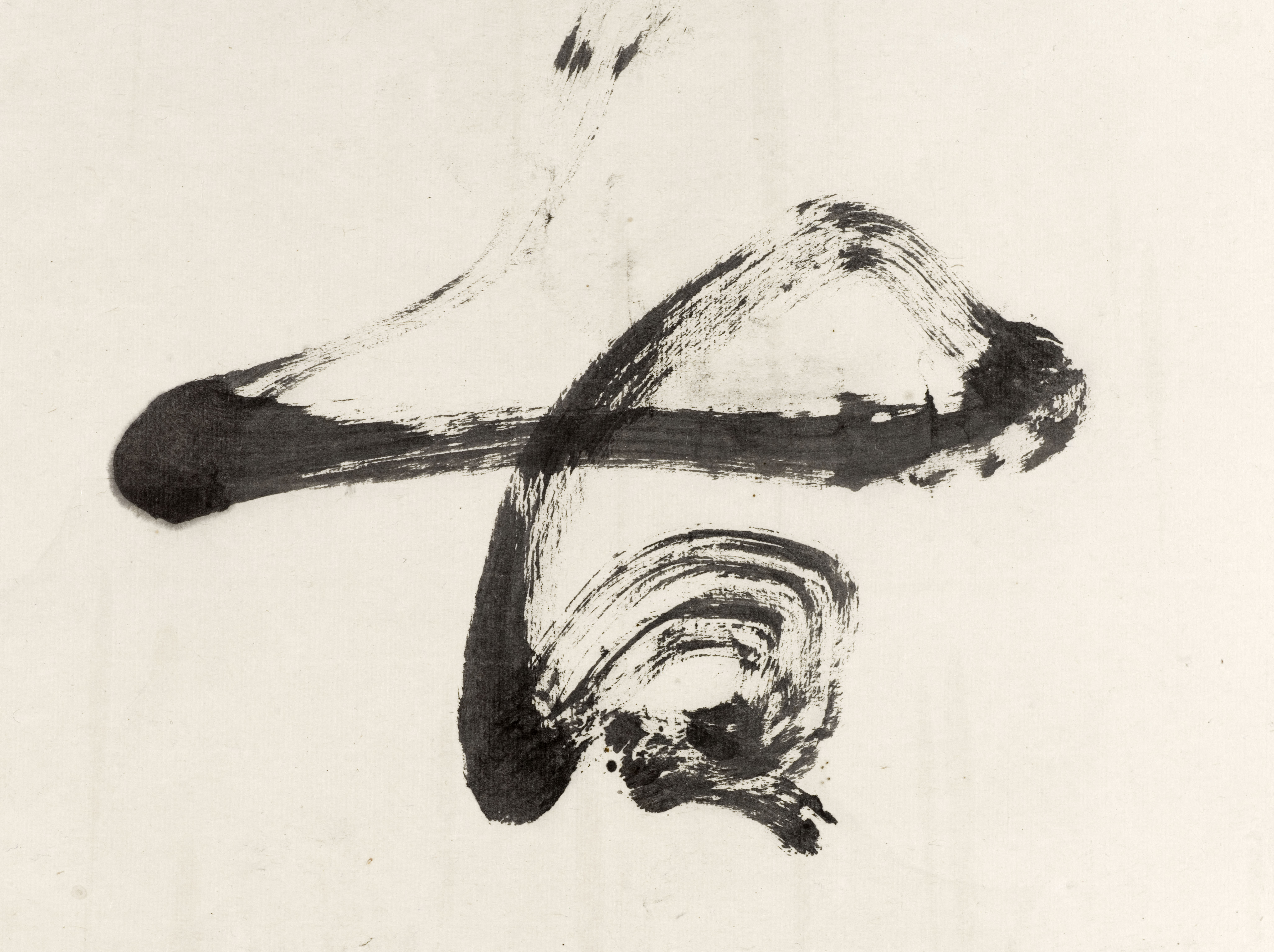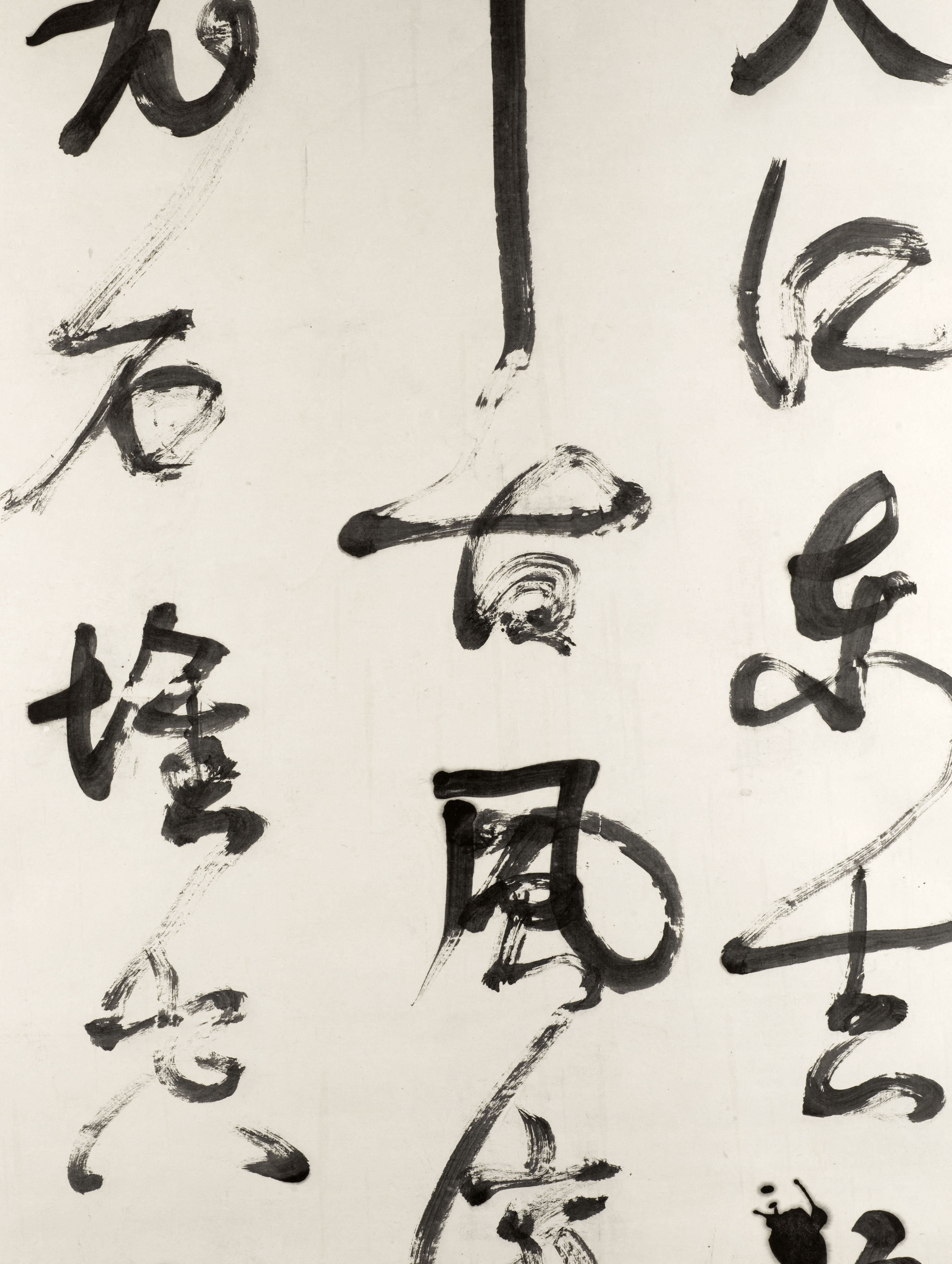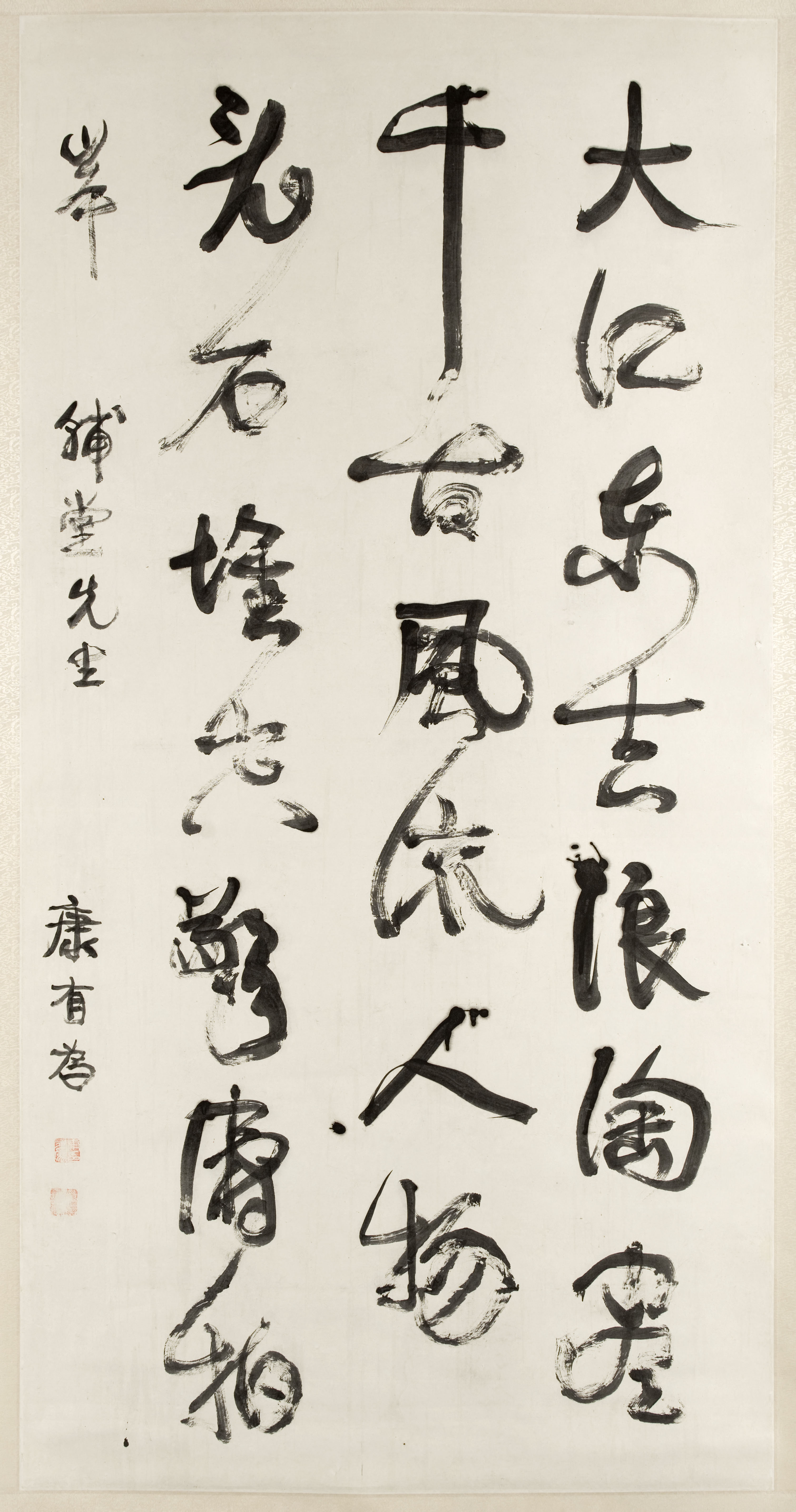
La Falaise rouge
Papier, Encre
Calligraphie
康[you]為; 康[you]為印; 維新百日, 出亡十六年, [san) 周大地, 游遍四洲, 經 [san) 十一國, 行六十萬里.
Don manuel : Lecomte, Georges
M.C. 8954
Kang Youwei was a native of Nanhai, Canton (Guangdong). After training at the Xuehai Tang Academy, he obtained his jinshi degree in 1895. He discussed his reformative ideas in two major works: the Study of the Forged Classics of the Xin Dynasty (Xinxue weijing kao) in 1891, challenging the official interpretation of the classics, and the Study of the Reforms of Confucius (Kongzi gaizhi kao) in 1897, which presented a fresh and progressive vision of Confucius. In 1898, he was appointed as a government adviser and advocated, among other reforms, the establishment of a parliamentary monarchy. Following reactions from conservative circles, he had to leave the country. He lived in exile until 1916, travelling notably in the West. Besides politics, Kang Youwei’s thinking embraced social, philosophical and religious issues, as demonstrated in his last work, Book on the Great Unity (Datong shu).
Where the arts were concerned, his comparison of the Western
and Chinese pictorial traditions during his travels led him to conclude that Chinese painting was in a state of decadence. An admirer of Raphael and the masters of the Song and Yuan eras, he believed it was necessary to operate a reorientation of Chinese art, through the study of Western art, on the one hand, and by drawing inspiration from the traditions underpinning the grandeur of the academic art of the Song dynasty, on the other hand. This defence of realism in art would have a considerable influence on painters such as Xu Beihong (1895-1953) and Liu Haisu (1896-1994), who followed his teaching. In the field of calligraphy, Kang Youwei’s work was in line with the ideas of Ruan Yuan (1764-1849) and Bao Shichen (1775-1855), in their seminal writings of the epigraphic school (the study of steles) (Beixue pai). Kang Youwei turned away from the calligraphic tradition inherited from Wang Xizhi and looked instead to ancient steles. His calligraphy refers in particular to the inscriptions of the Han and Northern Wei period. Kang Youwei’s large characters, with their deliberately imprecise stroke, have a monumental look inspired by the study of stone inscriptions, such as the Shimen ming. This script derived from the style of the scribes, lishu, nevertheless developed in cursive form. The inked brush splashes the sheet here and there, while certain characters have an extremely dry rendering. This contrast produces a striking impression of energy.



